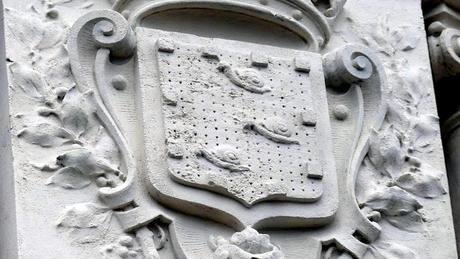 At various locations in the quiet western Bordeaux quarter of Caudéran, traces can still be spotted of the coat of arms that was Caudéran’s when it was a separate town. Surprisingly, the crest features three snails. The explanation had better be a good one!
At various locations in the quiet western Bordeaux quarter of Caudéran, traces can still be spotted of the coat of arms that was Caudéran’s when it was a separate town. Surprisingly, the crest features three snails. The explanation had better be a good one! Caudéran was an independent town until 1965 when it merged with its more imposing neighbor Bordeaux, a move which was no doubt in everybody’s interest although it is often murmured that the move was primarily instigated by Bordeaux’s mayor Jacques Chaban-Delmas. By becoming part of the wider city, the 29,000 residents of this well-to-do district (referred to as the “Neuilly of Bordeaux”) would help swell the conservative Chaban-Delmas’s electoral base. In return, they did get to keep their own 33200 postcode...
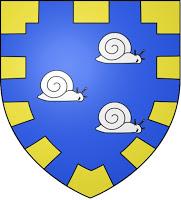
Source: Wikipedia.
The most famous and festive date in Caudéran’s calendar year was Ash Wednesday (mercredi des cendres). Any self-respecting Bordelais would have spent the previous days partaking in carnival-themed shenanigans through until Shrove Tuesday (mardi gras). Just before the sobering period of Lent kicked in, Ash Wednesday became synonymous with one final day of food, drink and general partying in Caudéran, the huge crowds of people mingling with each other in carnival masks and fancy dress… and, you guessed it, the de facto meal was a plate of snails.
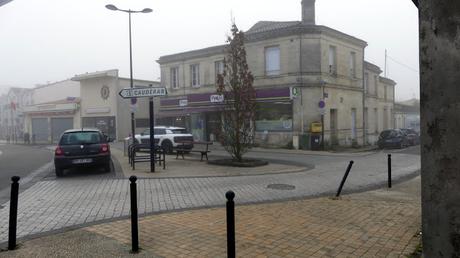
Place Lestonnat: one of the focal points of Caudéran's traditional Ash Wednesday celebrations.
Indeed, in amongst the vines, flowers and marshland in the area at the time, snails were commonplace and had developed into something of a local speciality supplied by Caudéran’s “cagouillards” (“cagouille” being the Charentais term for snail that was naturally transposed into Bordeaux's Bordeluche patois). So much so that one of Caudéran’s most famous restaurants at the time, on Place de Lestonnat, was none other than À la Renommée des Escargots. When a local Caudéran newspaper (the offices of which were in central Bordeaux) was launched in 1896, it was naturally given the name “L’Escargot”. Finally, Caudéran even incorporated snails into the town’s Gascon motto: “Lou limac cendrenous a fait ma renoumade” (a rough translation could be "Renowned for the ash snail").The Ash Wednesday tradition died out during the First World War, just as Caudéran began developing into the residential quarter we are now familiar with. But the snail connection lived on in the shape of the town’s coat of arms, hence the designs that can still be seen above the door and on the exterior of what was the town’s mairie, above the door of the municipal police station, and on the war memorial where Caudéran’s standing as a “ville” lives on, carved in stone.
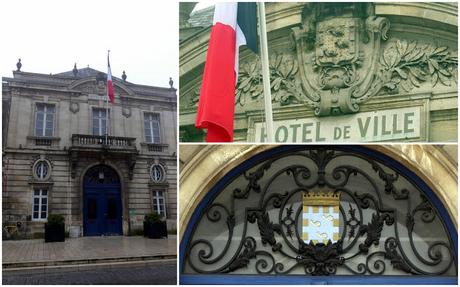
The old town hall (now a mairie de quartier).
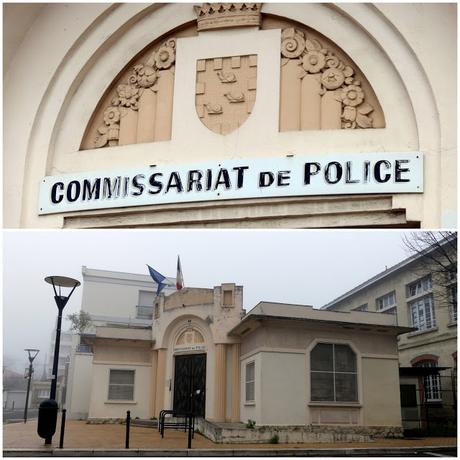
The pleasingly bizarre police station.

The war memorial, frozen in an era when Caudéran was still a ville.
Visiting the area today and checking out some of the restaurants in Caudéran, I fail to find a single mention of snails on the menu (possibly the first time I have been disappointed not to spot snails in among the culinary options on offer). However, the snail connection is gradually being revived as the local association Vivre à Caudéran has recently begun organising modern-day “Fête de l’Escargot” celebrations in July of each year on Caudéran church square.And, it could be argued that the taste of the Caudéran snails lives on, handed down by generations of locals. To get a feel of what those festive snails must have tasted like back in the day, tinned “Escargots à la Bordelaise” can easily be purchased, and there are also plenty of recipes readily available online... although I am reluctant to try any of them myself! Bon appétit nevertheless!
> Much of the information in this piece was compiled from an article written by Philippe Prévôt and Richard Zéboulon (collectively known as Cadish) for Sud Ouest which also features in their book Bordeaux, petits secrets et grandes histoires, and from the entry about Caudéran in Jean-Jacques Déogracias’s Blasons des communes de la Gironde (thanks Guillaume!).
> Thanks Vincent for the linguistic tips!
> Ce dossier est également disponible en français !
